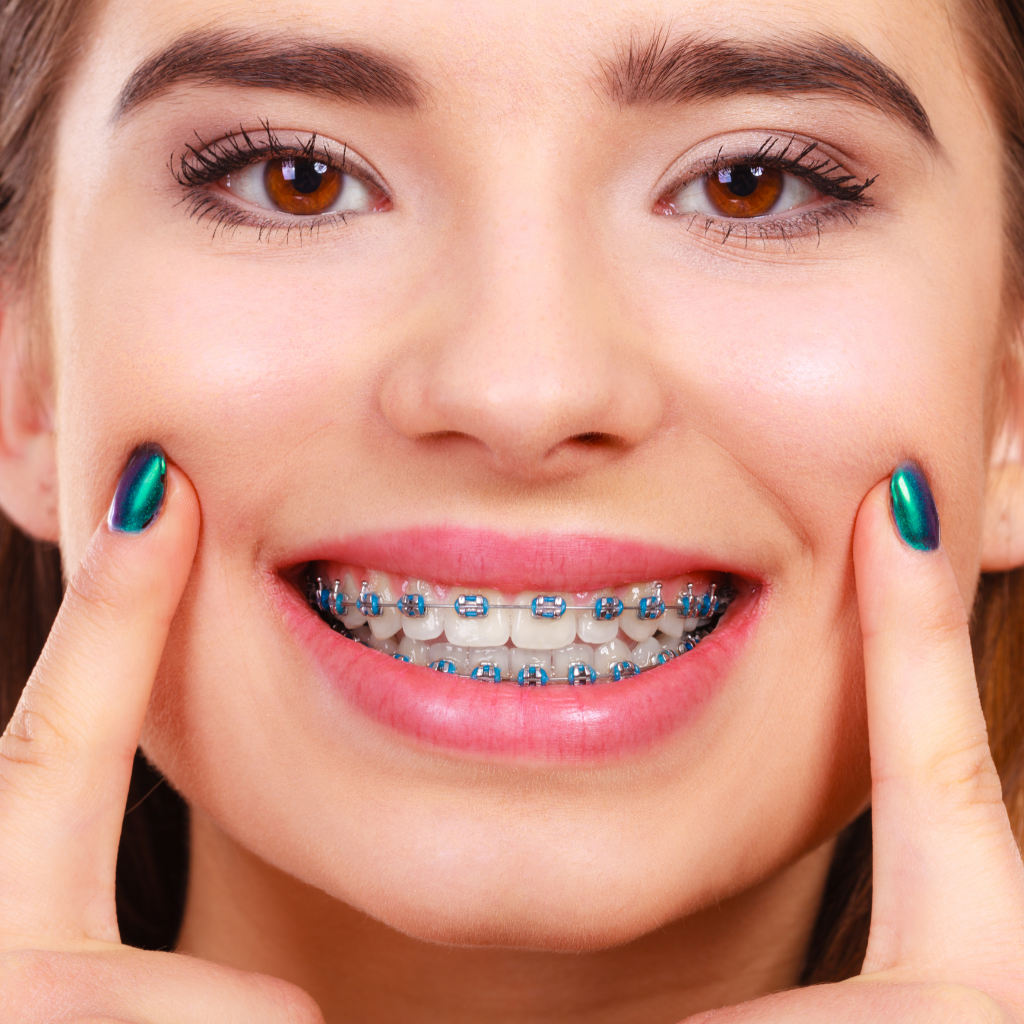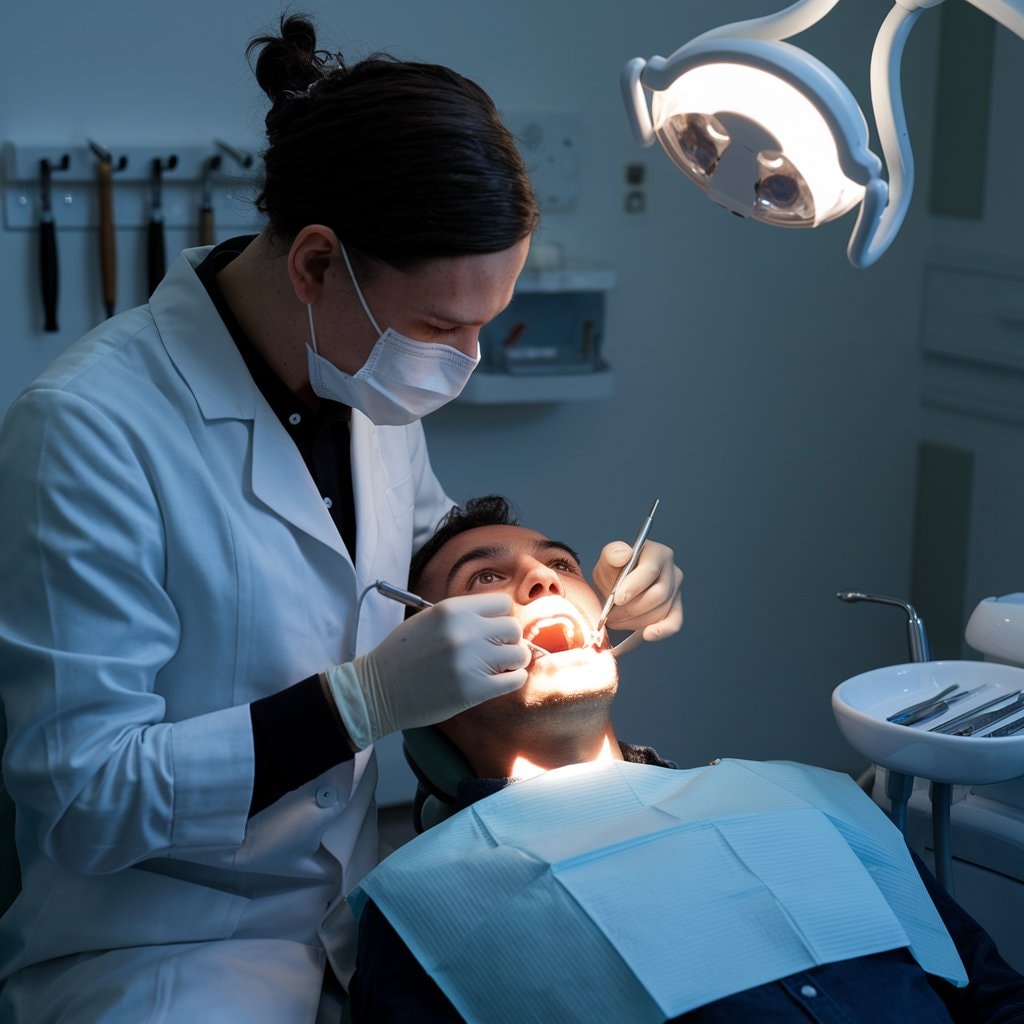Dental clip treatment, primarily recognized as teeth braces, involves custom-fitted devices to correct misaligned teeth and jaw-related issues, enhancing both dental function and aesthetics. There are various types, including metal, ceramic, invisible, self-ligating, lingual, and Invisalign braces, each catering to different needs and preferences. The procedure typically spans one to three years, starting with an assessment using advanced imaging followed by tailored aligner changes. This treatment not only improves alignment but also supports long-term oral health. For thorough insights into how these benefits can apply, further exploration provides essential details.
Key Takeaways
- Dental Clip Treatment corrects misalignments and improves dental function using custom-fitted clips.
- Types of braces include metal, ceramic, invisible, self-ligating, lingual, and Invisalign.
- The procedure involves using a series of clear aligners, replaced every two weeks.
- Benefits include enhanced oral health, better aesthetics, and improved bite alignment.
- Treatment duration ranges from one to three years, depending on individual dental conditions.
How Does dental clip treatment Work?
Dental clip treatment begins with thoroughly assessing the patient’s dental alignment and occlusion to determine the misalignments or malocclusions.
This procedure utilizes custom-fitted clips, often part of a larger orthodontic strategy, to gradually move teeth into their ideal positions, addressing issues such as overcrowding, gaps, and bite irregularities.
The effectiveness of dental clips in orthodontic treatment underscores their role in improving dental function and aesthetic appearance.
Understanding the procedure of dental clip treatment
To effectively address malocclusions, dental clip treatment employs a set of custom clear aligners that gradually move teeth into place.
This orthodontic treatment begins with a detailed assessment of the patient’s teeth alignment, utilizing advanced imaging technologies. These images produce a sequence of clear aligners specifically tailored to the individual’s dental structure.
Each aligner is worn for about two weeks, gradually shifting teeth into alignment. This teeth straightening process is less visible than traditional dental braces, making it a preferred choice for adults and teens.
Additionally, the overall braces cost and duration of treatment duration varies based on the complexity of teeth alignment issues.
What dental issues can clip treatment address?
Dental clip treatment, including devices such as dental braces, clear aligners, ceramic braces, lingual braces, and traditional braces, is designed to correct many orthodontic issues.
Primarily, these treatments are utilized for straightening crooked teeth, aligning crowded teeth, and closing teeth gaps. Additionally, they effectively correct misaligned teeth, improving an individual’s bite and oral health.
Each type of dental clip offers unique advantages depending on the specific dental condition being treated. For instance, clear aligners are often chosen for their aesthetic appeal, while traditional braces are favored for their efficiency in handling severe misalignments.
The role of orthodontic treatment in dental clip procedures
As orthodontic treatment forms the cornerstone of dental clip procedures, involving a bonding process, ts primary function is to apply continuous pressure over time to gradually shift teeth into position.
This gradual tooth movement is essential for teeth straightening and the proper alignment of teeth, which are key goals of any orthodontic strategy.
Dental clip treatment encompasses various types of braces treatment, including traditional metal braces, self-ligating braces, and invisible braces. Each type is designed to address specific dental issues and patient preferences.
Orthodontic treatment not only improves aesthetic appearance but also contributes to better oral hygiene, as correctly aligned teeth are easier to clean.
Ultimately, dental clip treatment using these orthodontic tools guarantees effective and efficient results in achieving peak dental health and aesthetics.
What Are the Different Types of Braces Available?
Various types of braces are designed to cater to different orthodontic needs and aesthetic preferences.
Metal braces, known for their durability and effectiveness, are commonly used due to their ability to correct a wide range of dental misalignments.
Alternatively, ceramic braces offer a less noticeable option, while invisible braces provide a near-invisible appearance, appealing to those seeking a discreet solution.
Exploring metal braces and their benefits
Exploring the domain of orthodontics, metal braces emerge as a predominant choice due to their robustness and efficacy in treating a wide range of dental misalignments.
Metal braces, known for their strength, are essential in straightening teeth effectively. These fixed braces are often preferred in complex orthodontic cases where precision is key.
The design of self-ligating metal braces, which do not require elastics, simplifies dental hygiene practices for orthodontic patients, promoting better oral health.
A well-structured treatment plan involving metal braces improves alignment and contributes to a beautiful smile, enhancing both aesthetic appeal and functionality.
Regular adjustments made by orthodontists guarantee the braces work effectively throughout the treatment period, gradually moving the teeth into the desired position for ideal results.

Are ceramic braces a better option?
While metal braces are highly effective for complex orthodontic cases, ceramic braces present an appealing alternative for those seeking a less noticeable option. Ceramic braces, often referred to as clear braces, utilize brackets made of composite materials which blend in more naturally with the teeth. This makes them a preferred option for adults and older teens concerned about brace aesthetics.
Ceramic braces apply continuous pressure on the teeth to move them into the desired position, similar to how metal braces function. However, the treatment cost for ceramic braces can be higher due to the materials used.
| Feature | Metal Braces | Ceramic Braces |
|---|---|---|
| Visibility | More noticeable | Less noticeable |
| Effectiveness | High | Moderate to High |
| Treatment Cost | Lower | Higher |
Choosing the best treatment depends on the patient’s priorities, including aesthetics, budget, and specific dental needs.
Understanding invisible braces and their advantages
Invisible braces, often known as clear aligners, frequently represent an ideal solution for individuals seeking orthodontic treatment without the aesthetic impact of traditional metal or ceramic braces.
These dental aligners are virtually undetectable, ensuring that oral health improvement occurs discreetly. Good oral hygiene is easier to maintain with invisible braces because they can be removed during teeth cleaning.
Unlike traditional braces, where braces are visible, users of invisible braces can enjoy a diet without restrictions to soft foods only. Additionally, the risk of plaque buildup is minimized, as patients can use a soft-bristled toothbrush without the obstacles of fixed brackets.
This flexibility considerably enhances dental care, making invisible braces compelling for achieving optimal dental alignment with minimal lifestyle disruption.
How Much Does Dental Braces Treatment Cost?
The cost of dental braces procedure can vary greatly based on several factors, including the type of braces selected, the complexity of the dental issues, and the duration of treatment, necessitating patients to visit the dentist regularly.
Different types of braces, such as traditional metal, ceramic, and lingual, may come with varying price tags, reflecting their materials and the technological advancements they incorporate.
Additionally, prospective patients should consider the availability of financing options and insurance coverage, which can alleviate the financial burden of this essential dental treatment.

Factors affecting the cost of dental braces
The cost of dental braces can vary considerably based on several factors.
To begin with, the range of dental conditions requiring treatment heavily influences the decision-making process for the best treatment plan. Complex dental issues often necessitate more extensive dental services, thereby increasing costs.
Choosing different braces, such as metallic or self-ligating, also impacts the overall expense. Typically, self-ligating braces might be costlier but can reduce treatment time, which might offset the initial higher investment.
Additionally, the duration of treatment required to correct the dental condition plays a crucial role. Longer treatment times generally increase the overall cost due to increased visits and adjustments needed.
Is there a difference in treatment cost for different braces?
Indeed, the cost of dental braces varies considerably depending on the type selected.
Different types of braces cater to various dental issues, influencing the overall expenses. Here’s how costs differ:
- Traditional Metal Braces: Often the least expensive option, yet can cause discomfort when braces are placed and adjusted.
- Ceramic Braces: Costlier than metal, these blend with teeth color, making them less noticeable but effective.
- Lingual Braces: Positioned behind the teeth, their complexity in placement and adjustment leads to higher costs.
- Invisalign: These teeth clips are removable and nearly invisible, generally more expensive compared to traditional braces, offering aesthetic appeal but may require a longer duration before treatment is complete.
Do Braces Hurt and What to Expect?
When initiating orthodontic treatment with dental braces, patients commonly experience tooth discomfort due to the pressure applied to align the teeth.
This discomfort can be managed with recommendations from orthodontic professionals tailored to individual needs and circumstances.
Additionally, the duration of wearing braces and important oral hygiene practices during the treatment will be vital for achieving ideal results and maintaining dental health.
Common tooth discomfort and how to manage it
It is common for patients to report varying degrees of pain and discomfort, especially in the initial stages following the application of dental braces.
Managing this discomfort is essential to guarantee the best dental health outcomes and to limit any potential risk of dental issues such as tooth decay or gum diseases exacerbated by poor oral hygiene.
- Use fluoride toothpaste: It helps remineralize enamel and soothe sensitive areas.
- Maintain excellent oral hygiene: Prevents buildup that can increase discomfort and risk of decay.
- Avoid hard foods: Reduces the chance of damage to your braces and alleviates pressure on teeth.
- Consult your orthodontist if pain persists: Guarantees any underlying issues are addressed promptly.
How long does the braces treatment take?
The duration of braces treatment varies depending on individual dental conditions but typically ranges from one to three years.
Throughout this period, the orthodontist fixes archwires and adjusts them to correct the alignment of permanent teeth. Regular visits to the dentist are essential to guarantee the braces are functioning as intended.
Personalized treatment plans cater to each patient’s unique dental structure, making no age limit strictly applicable for starting treatment.
As the treatment progresses, adjustments in the braces may cause discomfort, which is a normal part of the process.
Once the treatment is finished, removing your braces will reveal the improved dental alignment. However, only after the dentist confirms that the desired results are achieved will a suitable treatment outcome be ensured.
Tips for dental care during treatment
Maintaining ideal dental hygiene during orthodontic treatment is crucial, as braces can increase the likelihood of food particles trapping between the brackets and wires, possibly causing plaque buildup and dental problems.
- Avoid Sticky and Hard Foods: Consuming sticky or hard foods can damage braces, leading to extended treatment times and increased dental concerns.
- Use Recommended Oral Care Products: Employ specialized toothbrushes and floss for adult braces to maintain oral hygiene and prevent bad breath.
- Incorporate Fluoride Rinses: Regular fluoride rinses can help strengthen teeth and improve oral health, reducing the risk of cavities.
- Schedule Regular Dental Checkups: Frequent visits to the dentist guarantee that any complications, such as profound bite adjustments or issues with tiny elastic bands, are promptly addressed.
When Should You Get a Dental Clip?
Determining the appropriate timing for initiating dental clip treatment hinges on various factors, including the patient’s age and the specific orthodontic issues.
While the ideal age for starting treatment typically falls during the early teenage years when dental structures are still developing, adults can also benefit from dental clips. However, they may face longer treatment times and additional considerations.
Sure signs, such as misaligned teeth or difficulty chewing, can indicate the need for a dental clip. This underscores the importance of a professional evaluation to determine the right timing and approach for orthodontic intervention.
Ideal Age for Starting Dental Clip Treatment
When considering the ideal age for initiating dental clip treatment, orthodontic evaluations are recommended as early as age seven. This early assessment aligns with the stage when children have both baby and permanent teeth, enabling orthodontists to predict developmental issues effectively.
Early intervention utilizing braces or clips can guide the proper growth of the jaws and the alignment of the teeth, enhancing both function and aesthetics.
- Prevent Misalignment: Early clip treatment helps guide the permanent teeth into their correct positions, potentially reducing more complex orthodontic issues later.
- Enhanced Confidence: Correcting dental problems early can boost a child’s self-esteem.
- Optimal Results: Younger patients often experience more adaptable and quicker results from orthodontic treatments.
- Health Benefits: Properly aligned teeth are easier to clean, decreasing the risk of future dental problems.
Can Adults Get a Dental Clip? What to Consider
While dental clip treatment is often initiated during childhood, it is equally viable for adults seeking to correct and enhance their dental alignment. Adults contemplating braces should consider how braces consist of brackets and wires designed to move teeth into better alignment gradually. The process requires brackets to bond correctly to each tooth, and care must be taken to avoid excess cement that could cause residue build-up.
| Concern | Description |
|---|---|
| Bonding | Confirming brackets bond properly to each of the two teeth. |
| Maintenance | Managing potential issues like food getting stuck in your braces. |
| Adjustments | Regular visits to adjust braces as teeth shift. |
| Outcome | Long-term alignment and improved dental health. |
Adults need to guarantee they commit to the regimen to prevent complications such as braces getting dislodged.
Signs That Indicate You Need Dental Clip Treatment
Identifying the need for this corrective approach involves recognizing various oral health and aesthetic signs that suggest misalignment or functional issues.
Dentists typically recommend considering dental clips when specific symptoms become apparent:
- Crowded or Crooked Teeth: Struggling with daily cleaning due to overlapping teeth can lead to dental decay and gum disease.
- Overbite or Underbite: Noticeable discrepancy in the alignment between the upper and lower teeth, potentially causing jaw pain and difficulties in chewing.
- Gaps Between Teeth: Excessive spacing may affect speech, increase the risk of periodontal disease, and diminish self-esteem.
- Frequent Biting of Cheeks or Palate: Accidental biting can indicate misalignment, causing discomfort and sores in the mouth.
What Happens After Dental Clips Are Removed?
Following the removal of dental clips, the use of a retainer is vital to guarantee that teeth remain in their new positions.
This post-treatment phase is essential for maintaining teeth alignment and preventing relapse.
Additionally, patients must adopt thorough dental care routines to preserve long-term oral health and hygiene.
The Importance of a Retainer Post-Treatment with Dental Clips
After the removal of dental clips, the use of a retainer becomes vital to maintain the alignment achieved through orthodontic treatment.
Retainers are custom-made devices, typically made from wires or clear plastic, holding teeth in position after significant realignment.
- Prevention of Regression: Teeth can gradually shift back to their original positions, undoing years of treatment.
- Stabilization: New bone tissue needs time to solidify around the repositioned teeth, securing them in place.
- Long-Term Assurance: Consistent retainer use guarantees lasting results, safeguarding the investment in a healthy, attractive smile.
- Adaptability: Retainers are designed to accommodate the continued natural shifting of teeth as one age, maintaining alignment over the years.
Maintaining Teeth Alignment After Dental Clip Treatment
Once dental clips are removed, maintaining teeth alignment becomes essential to post-orthodontic care.
Retainers play a pivotal role in this phase by holding the teeth in their new positions. Typically, orthodontists will prescribe either a fixed or a removable retainer. The fixed type, often a thin wire bonded behind the teeth, is worn continuously, while the removable type is typically worn nightly.
Regular follow-up visits are vital to monitor stability and make adjustments to the retainers as needed. Additionally, patients must adhere to specific guidelines regarding the care and maintenance of their retainers, ensuring that the adjustments made by the dental clips are preserved long-term.
Long-Term Dental Care and Hygiene Tips After Dental Clips
Post-treatment dental hygiene is essential for maintaining the results achieved with dental clips. Proper care guarantees that teeth remain in their corrected positions and minimizes the risk of future dental issues.
Here are vital tips for long-term dental care:
- Regular Dental Check-ups: Guarantees early detection and management of potential alignment shifts or other oral health issues.
- Consistent Oral Hygiene Routine: Daily brushing and flossing to prevent plaque buildup, which can lead to decay and gum disease.
- Use of Retainers: Adhering to the prescribed schedule for wearing retainers to prevent teeth from gradually shifting back.
- Balanced Diet: Avoid foods that can damage teeth or orthodontic fixtures, supporting overall dental health.
Conclusion
In summary, dental clip treatment, commonly known as braces, is a significant orthodontic intervention to correct misaligned teeth and jaw problems. Various types of braces cater to different aesthetic preferences and orthodontic needs. While the cost can vary, the benefits of enhanced oral function and aesthetics are considerable. Patients may experience discomfort initially, but this typically subsides. Post-treatment care is essential to maintain the results achieved through this transformative dental procedure.


